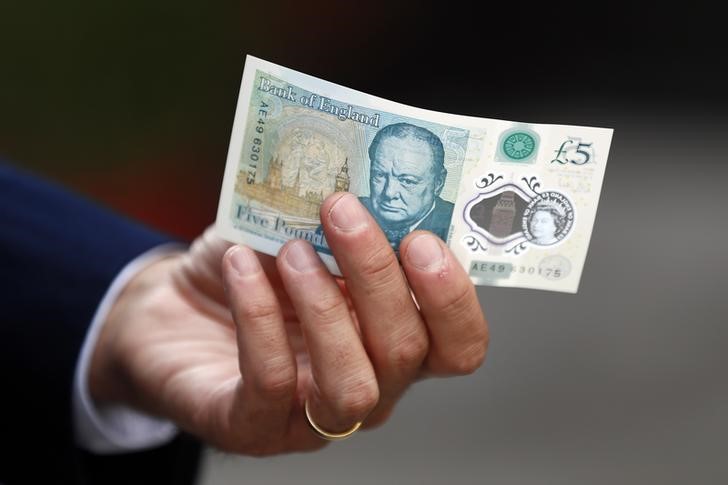Investing.com - The pound reversed losses against the dollar on Wednesday, pulling away from two-week lows after the latest UK jobs report showed that the jobless rate fell, but pay growth continued to lag behind inflation.
GBP/USD was at 1.2858 by 05.04 AM ET, after falling as low as 1.2812 earlier, the weakest since June 28.
Figures from the Office for National Statistics showed that the UK unemployment rate fell to 4.5% in the three months to May, a new 42-year low.
The number of people out of work fell by 64,000 in the three months to May, the report said.
The data also showed that wages are not keeping pace with inflation, adding to concerns over a squeeze on living standards amid rising inflation and Brexit uncertainty.
Average weekly earnings, including bonuses increased by 1.8% in the March to May quarter.
Basic pay, excluding bonuses, rose by 2.0% year-on-year.
The annual rate of inflation in the UK rose by 2.9% in May as the weaker pound pushed up the cost of imported goods.
Sterling came under pressure earlier Wednesday after Bank of England Deputy Governor Ben Broadbent said in an interview that he is not ready to raise interest rates just yet.
The remarks indicated that the BoE is now almost certain to keep rates on hold at their current record lows at next month’s meeting.
The euro gave up its early gains against the pound, with EUR/GBP dipping 0.11% to 0.8915 after rising to an eight-month high of 0.8948 overnight.
The euro was boosted as the dollar came under pressure amid fresh concerns over the Trump administration’s alleged connection with Russia, while investors looked ahead to Federal Reserve Chair Janet Yellen's comments.
The U.S. dollar index, which measures the greenback’s strength against a trade-weighted basket of six major currencies, was little changed at 95.49, not far from the nine-month low of 95.22 plumbed in late June.
